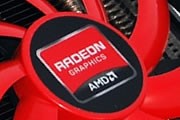AMD A4-5000 Review: The affordable ultraportable APU
In 2006 AMD announced 'Fusion', a project aimed to develop a system on a chip that combined a CPU and GPU on a single die. Fast forward to this day, AMD has taken things a step further with Kabini, the first ever quad-core x86-based SoC.
AMD are releasing their first Kabini based processors today with the launch of the A6-5200 and the A4-5000. The A4-5000 that we are reviewing features four Jaguar cores clocked at 1.5GHz, a total L2 cache of 2MB, and the Radeon HD 8330 GPU on-die.
Sapphire Edge VS8 Review: The $500 Mini PC
While full-sized desktop computers are still around, tablets and smartphones have proven that technology has come far enough to essentially cram a fully capable computer into a space that is suitable for your pants pocket, a purse, or a small backpack. This idea of shrinking hardware hasn't been overlooked by manufacturers as several now feature space-saving designs based on mobile hardware.
Such is the case with Sapphire's new Edge VS8 mini-PC powered by AMD's A8 APU. The system is hardly any larger than an external optical drive, while still packing 4GB of DDR3 memory, Radeon HD 7600G graphics, a 500GB SATA HDD, built-in support for Bluetooth 3.0 as well as 802.11 b/g/n wireless and a bevy of rear I/O connections.
AMD A10-6800K and A4-4000 APU Review
Little over 6 months since launching Trinity on the desktop, AMD is updating their product lineup with a minor refresh. Codenamed Richland, these new APUs offer no substantial changes to either the CPU or GPU. Other than some clock speed improvements and better power management, everything is mostly the same.
Leading the pack is the A10-6800K, which is stepping in to replace the A10-5800K. Both processors are identical with a few minor exceptions. The A10-6800K is clocked slightly higher and has an updated Radeon HD 8670D GPU. We're also taking a look at the bargain basement A4-4000 at the other end of the spectrum, which we suspect is going to be a slightly slower version of last year's A4-5300.
AMD: The Rise, Fall and Future of an Industry Giant
There is no single event responsible for ousting AMD from its lofty position in early 2006. The company's decline is inextricably linked to its own mismanagement, some bad predictions, its own success, as well as the fortunes and misdeeds of Intel.
AMD has long been subject of polarizing debate among technology enthusiasts. The chapters of its history provide ample ammunition for countless discussions and no small measure of rancour. Considering that it was once considered an equal to Intel, many wonder why AMD is failing today. However, it's probably fairer to ask how the company has survived so for long – a question we intend to explore as we revisit the company's past, examine its present and gaze into its future.
AMD A10-5800K APU Review: Trinity Comes to the Desktop
AMD has continued refining its Fusion offerings since launching the first APUs early last year. Just four months ago the company launched Trinity for mobile platforms – arguably where its APUs provide the most value.
Now AMD is finally prepared to offer a desktop version, which brings a new socket and a new high-end chipset. Given that Piledriver improved Bulldozer's power consumption, we expect Trinity to be more efficient than Llano, while Cayman's VLIW4 architecture should boost the GPU's speed – or so we hope.















